This post is part of our special coverage Forest Focus: Amazon.
The mountainous region of Rio de Janeiro is suffering what is being considered Brazil’s most-deadly natural disaster. It is the country's worst disaster involving floods since those in Caraguatatuba (SP) in 1967. Others States like São Paulo and Minas Gerais are also dealing with flood. However, in the State of Rio de Janeiro, the cities of Petrópolis, Teresópolis, Friburgo, Areal, São José do Vale do Rio Preto and Sumidoura have counted more than 500 fatalities and countless people are left homeless. This tragedy, which is only in the first steps of aiding victims, still doesn't allow us to assess the damage and the recovery work to be done. But it already brings back the debate about the urgency of creating a policy for climate catastrophes in the country.
Floods during the summer are not a new phenomenon in Brazil. In 2008, Global Voices covered the impacts of a similar disaster in the State of Santa Catarina and also wrote about the networks of solidarity formed by bloggers. Ecologist Breno Alves explains in his blog Discutindo Ecologia [Discussing Ecology, pt], the particularities behind the climate phenomenon that usually happens during this period of the year. According to him,
A zona de convergência do Atlântico sul traz muita umidade (da região amazônica) para a região sudeste nesta época do ano. Só que na região serrana, a umidade já é por natureza mais alta. Assim, o sinergismo entre estes dois acontecimentos, gera tamanha pluviosidade.
Breno Alves emphasizes in his blog that “this same phenomenon happens every year”. A Global Voices article from May 2009, describes floods in Bahia and another one published in June 2010, talks about the same kind of problem at Alagoas and Pernambuco, in the Northeast, which were also greatly affected.
What the blogosphere has been wondering is, if the phenomenon is known and happens every year, where are the policies to prevent such disasters? The blog Ambiente Regional [Regional Environment, pt] says that a year ago a proposal to establish a law of urban and environmental responsibility was launched, motivated by the tragedies of Angra dos Reis and Niterói (RJ) [pt] , – where the hillside collapsed killing a large number of people – but the debate still remains only in the blogosphere [pt]. He also comments on a national policy for the mountains:
Desde 1992 os ecossistemas de montanha são mundialmente reconhecidos como áreas especialmente sensíveis aos impactos da mudança do clima. A Agenda 21, organizada pela ONU e assinada por 192 chefes de Estado, dedica seu capítulo XIII ao tema, identificando os habitantes das montanhas como extremamente vulneráveis ao aquecimento global. O Brasil ainda não estabeleceu sua política nacional para as montanhas, mas suas diretrizes já foram construídas no seminário realizado em dezembro de 2009, que reuniu especialistas no Jardim Botânico do Rio de Janeiro. Mesmo assim, a legislação existente, se aplicada, protegeria as áreas frágeis e de risco, evitando boa parte dos sofrimentos humanos.
Urban Planner Raquel Rolnik, when asked about a possible solution to prevent such catastrophes answered:
Tem solução, sim. Evidentemente algumas medidas são paliativas. Há formas de intervenção para melhorar a estabilidade dos terrenos, drenar melhor a água, conter encostas, ou seja, melhorar a condição de segurança e a gestão do lugar para que, mesmo numa situação de risco, se possam evitar mortes.
Mas a questão de fundo é que ninguém vai morar numa área de risco porque quer ou porque é burro. As pessoas vão morar numa área de risco porque não têm nenhuma opção para a renda que possuem. Estamos falando de trabalhadores cujo rendimento não possibilita a compra ou aluguel de uma moradia num local adequado. E isso se repete em todas as cidades e regiões metropolitanas.
Yes, a solution is possible. Clearly some measures are palliative. There are forms of intervention to improve the stability of the land, better drain water, contain slopes, or improve the security and management of places. For, even in risky situations, it should be be possible to prevent deaths.
But the bottom line is that no one moves to a risk area because they want to or because they are stupid. People will live in a risk area because they have no option because of their low income. We're talking about workers whose income does not allow them to buy or rent a house in a suitable location. And this happens in every city and every metropolitan area.
The blog Discutindo Ecologia [Discussing Ecology] criticized:
Com certeza, os governantes irão eleger o vilão do problema: as mudanças climáticas. Climatologistas, meteorologistas e “especialistas” irão falar que os fenômenos meteorológicos são intensificados pelas mudanças climáticas. Sim, mas isso é um problema secular no Rio de Janeiro! Até hoje, não foi encontrada correlação significativa entre quantidade de chuva e descaso do poder público, agora, entre mortes que poderiam ser evitadas e descaso do poder público, sim.
Twitosphere also protested against indifference:
diegoroston o ano passado foi a mesma coisa !! vão esperar acontecer outra tragédia de novo!!! tomara que naum, prestem atenção autoridades #chuvasrj
TonGalego “O Brasil ñ é Bangladesh, ñ tem desculpa. Imagine se tivesse terremoto, vulcão, furacões…” Consultora da ONU, sobre as #chuvasrj
diegoroston last year the same thing happened!! They will wait for another tragedy!!! I hope not. Authorities, pay attention #chuvasrj [rains in Rio]
TonGalego “Brazil is not Bangladesh, there is no excuse. Imagine if the country had earthquakes, volcanoes, hurricanes…”UN Consultant about #chuvasrj [rains in Rio]
At her self-titled blog Cris Dias published a statement sent by Ana Erthal, who lives in Rio's mountainous region:
Aqui, em Barra Alegre não tivemos vítimas. (…) Estamos ilhados, sem saída, por enquanto. Mas ainda temos remédios e mantimentos. E não conseguimos parar de pensar em tudo isso. (…) Os amigos ligam a todo instante de todos os lugares do Brasil. O que eu digo é sempre o mesmo: o que está na tv não é nada. A catátrofe é muito maior. Se puder, doe sangue, alimentos e água nesses pontos que a tv indica. Ajudará muito. Cobre do poder público, dos políticos, espalhe as mensagens. Faça o que puder. Tem muita gente precisando.
Solidarity
The people's mobilization is very widespread, not only helping the authorities to rescue victims, but also donating blood and food and disseminating information. A map with the position of places collecting donations is constantly being updated.The Ministry of Health created an online registration form for health workers willing to volunteer helping victims of floods in the mountainous region, and so far the list has more than 100 subscribers. Through the hashtags #chuvasrj [rain in Rio] and #prayforbrazil, netizens express solidarity with the climate catastrophe of Rio de Janeiro. Read a small selection of tweets:
UiliamRodrigues Separe roupas e cobertos que vc ñ usa, incremente com garrafas de água mineral e entregue nos postos de coleta. #chuvasrj #prayforbrazil
patrulhadalama CHUVAS NO RJ – @Hemorio bate novo recorde nesta sexta-feira com 1.330 doadores http://t.co/PJMcq66 #chuvasrj #doacoes
Reneflu Site Oficial da Prefeitura de #Friburgo com nomes das vítimas. Divulguem!!!! http://secompmnf.blogspot.com/#chuvasrj
gdotb O que doar e do que não doar -lista atualizada http://is.gd/SHPODX (fonte Cruz Vermelha) #rt #chuvasrj
UiliamRodrigues Get clothes, blankets and what you are not using, also take bottles of water and deliver them to a donation point #chuvasrj [rain in Rio] #prayforbrazil
patrulhadalama RAIN IN RIO – @Hemorio has a new record with 1330 blood donors this Friday http://t.co/PJMcq66 #chuvasrj #doacoes [rain in rio / donations]
gdotb What you should and shouldn't donate – an updated list http://is.gd/SHPODX (from the Red Cross) #rt #chuvasrj [rain in Rio]
Blog Patas e Patas [Paws and Paws] is asking help for the animals and remembers:
Todos sofreram grandes danos, todos perderam animais. A tragédia é semelhante para todos: muros arrastados, canis destruídos, animais mortos e feridos, alguns em estado bem grave. O acesso é difícil. A mídia só informa os problemas enfrentados pelos humanos.
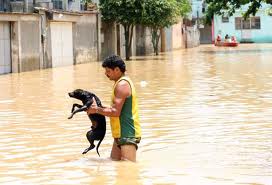
Photo published on the blog: http://betaolemela.blogspot.com/2011/01/enchentes-de-janeiro-no-mundo.html
Besides the countless losses and all the necessary reconstruction in the affected cities, we should also remember the impact that flooding has on the pricing and/or lack of distribution of vegetables throughout the State, as the mountainous region is the largest agriculture producer of Rio de Janeiro.
This post is part of our special coverage Forest Focus: Amazon.

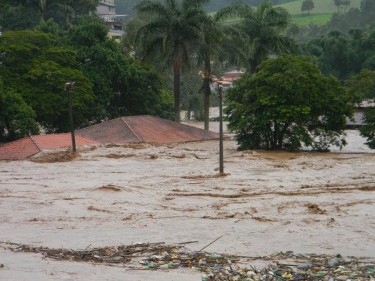
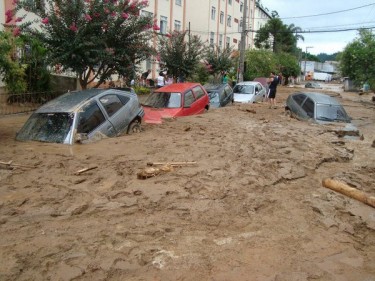
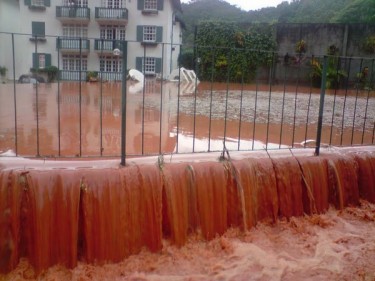
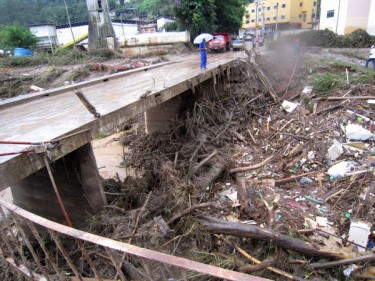






6 comments